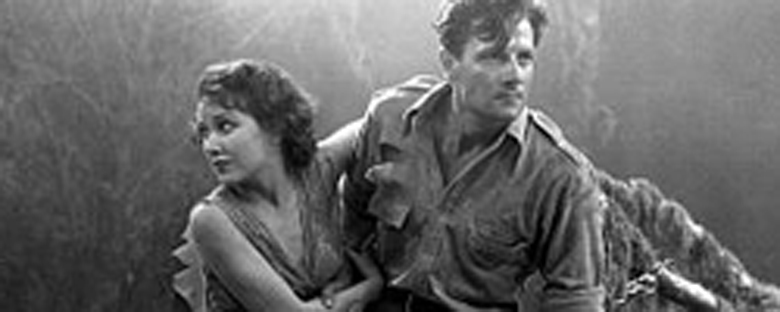Reviews
Irving Pichel and Ernest B. Schoedsack
USA, 1932
Credits
Review by Beth Gilligan
Posted on 26 October 2005
Source The Criterion Collection DVD
Related articles
Features: 31 Days of Horror
Despite a skin-crawling premise and a stellar execution, The Most Dangerous Game has never quite been able to escape the enormous shadow of King Kong. Produced by Merian Cooper & David O. Selznick and directed by Irving Pichel & Ernest Schoedsack (who co-directed King Kong with Cooper), it was filmed concurrently with the latter movie and even employed some of the same actors (Fay Wray and Richard Armstrong) and sets. Although it was a box office success upon its release in 1932, the specter of the giant ape scaling the Empire State Building the following year automatically rendered it an afterthought in the minds of most moviegoers.
This designation doesn’t seem entirely fair, for while The Most Dangerous Game might not soar to the towering heights of King Kong, it dives headfirst into a fascinating and enduring exploration of the primal urges of men. Based on a short story by Richard Connell, it plays like a refined predecessor of Fight Club, with hunting rifles instead of fists and Wray’s wide-eyed beauty replacing Helena Bonham Carter’s Goth temptress.
In a rushed introduction (the film’s intended running time of 85 minutes was eventually scaled back to 63 minutes), Joel McCrea’s Bob Rainsford is shown on a yacht swapping stories with fellow explorers about his prowess as a big game hunter. The conviviality of this old boys club atmosphere lasts until the captain reports navigational problems, and the ship begins violently lurching in the shark-infested waters. As the boat begins to sink, the men scramble to reach land, but only Rainsford manages to survive.
When he washes up on a nearby island, he is stunned to discover a strange castle filled with other shipwreck survivors, including a young woman named Eve and her hard-drinking brother Martin. The owner of the property is Count Zaroff, a mysterious Russian who relishes entertaining his stranded guests. Zaroff is especially delighted to meet Rainsford, whose professional reputation he is familiar with. As it turns out, the Count is an avid hunter himself, and having survived the battle fields of World War I, has upped the ante on the type of game he hunts, though he refuses to disclose his new methods in front of the other guests. As he crosses the room to pour Martin another drink, Eve edges closer to Rainsford and worriedly confides in him that two of the castle’s visitors seem to have disappeared.
Although Rainsford initially brushes off Eve’s concerns, when she knocks on his door in the middle of the night to inform him that Martin has gone missing, he agrees to help her out. Before long, they stumble upon the Zaroff’s chilling secret: a game room filled with the mounted heads of his former guests. Hoping to avoid a similar fate, Rainsford and Eve escape to the dark and forbidding jungle nearby, where they struggle to outwit the madman in their midst.
Despite the absence of any female characters in Connell’s short story, Wray’s Eve plays a pivotal role in the film. For both Zaroff and Rainsford, she becomes a prized conquest. While Rainsford’s lust for her manifests itself in his protective urges, the Count’s intentions are decidedly less gentlemanlike. Though the two men are linked by their profession, the film goes out of its way to establish the moral divide between them. The jungle setting in which they confront each other underlines the starkness of the primal struggle in which they are in engaged. While The Most Dangerous Game may lack King Kong’s elaborate special effects, its tautly-paced final chase sequence makes it more than worthy of standing on its own.
We don’t do comments anymore, but you may contact us here or find us on Twitter or Facebook.



